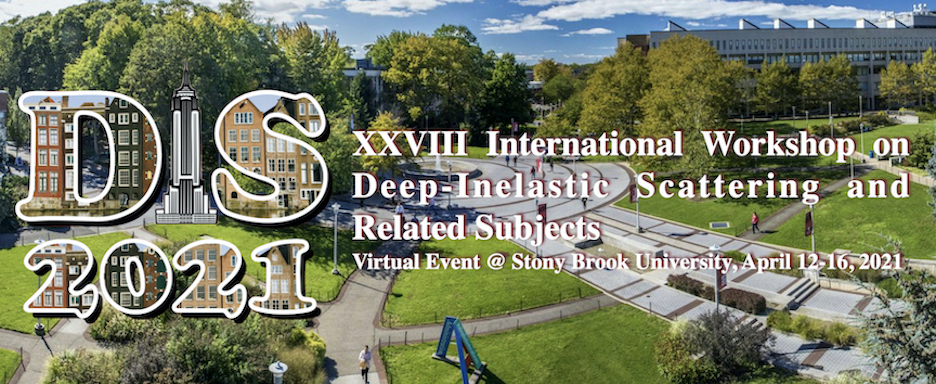Speaker
Description
Color Glass Condensate (CGC) effective field theory (EFT) at leading order describes well the Deep Inelastic Scattering (DIS) inclusive cross section data at small-x as measured by the HERA experiments [1-3]. Recently the inclusive DIS impact factors have been calculated in Next-to-Leading Order (NLO) accuracy in CGC EFT [4-6], and the soft gluon divergence present at NLO has been factorized successfully [7].
In this talk we discuss our recent work [8] on the first comparisons of the NLO DIS cross sections to HERA data. Fitting the HERA reduced cross section data fixes the the non-perturbative initial condition to the BK evolution. Since the available NLO DIS inclusive cross sections are calculated in the massless quark limit, we construct and fit a dataset of light-quark-only cross sections using an independent parametrization of HERA total and heavy quark data. We find an excellent description of the HERA data. As the NLO BK is computationally expensive [9], we compare a number of beyond-LO prescriptions that approximate the full NLO BK, including the recent evolution parametrized in target rapidity [10]. These beyond-LO evolution equations include important higher order contributions by resumming corrections enhanced by large transverse logarithms.
In addition to inclusive DIS we will briefly discuss diffractive DIS (DDIS), which has been described quite successfully at LO accuracy. To describe HERA data at small-$\beta$, an NLO contribution from a scattering quark-antiquark-gluon state is needed. This contribution has been calculated as a large-$Q^2$ limit approximation [11], and describes HERA data well [12]. Recent NLO CGC developments with DIS provide tools to work towards full NLO description of DDIS.
[1] T. Lappi, H. Mäntysaari, Phys.Rev. D88 (2013) 114020
[2] E. Iancu, J.D. Madrigal, A.H. Mueller, G. Soyez, D.N. Triantafyllopoulos, Phys.Lett. B750 (2015) 643-652
[3] B. Ducloué, E. Iancu, G. Soyez, D.N. Triantafyllopoulos, Phys.Lett.B 803 (2020) 135305
[4] G. Beuf, Phys.Rev. D94 (2016) no.5, 054016
[5] G. Beuf, Phys.Rev. D96 (2017) no.7, 074033
[6] H. Hänninen, T. Lappi, R. Paatelainen, Annals Phys. 393 (2018) 358-412
[7] B. Ducloué, H. Hänninen, T. Lappi, Y. Zhu, Phys.Rev. D96 (2017) no.9, 094017
[8] G. Beuf, H. Hänninen, T. Lappi, H. Mäntysaari, Phys.Rev.D 102 (2020) 074028
[9] T. Lappi, H. Mäntysaari, Phys.Rev. D91 (2015) no.7,074016
[10] B. Ducloué, E. Iancu, A.H. Mueller, G. Soyez, D.N. Triantafyllopoulos, JHEP 1904 (2019)081
[11] K.J. Golec-Biernat, M. Wusthoff, Phys.Rev.D 60 (1999)114023
[12] H. Kowalski, T. Lappi, C. Marquet, R. Venugopalan, Phys.Rev.C 78 (2008)045201

